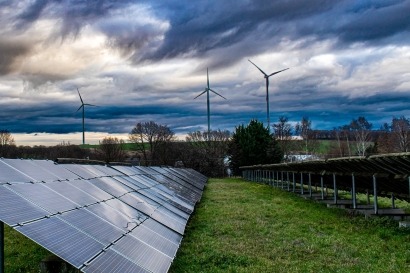
The research, which looked at extensive heat and cold waves across the six interconnected energy grid regions of the U.S. from 1980-2021, also found that every region experienced power outages during these events in the past decade.
The findings, detailed in the journal Environmental Research Letters, suggest that using more renewable energy at these times could help offset increased power demand as more people and businesses turn on heaters or air conditioners.
“These extreme events are not going away anytime soon. In fact, every region in the U.S. experiences at least one such event nearly every year. We need to be prepared for their risks and ensure that people have reliable access to energy when they need it the most,” said lead author Deepti Singh, a Washington State University climate scientist. “Potentially, we could generate more power from renewable resources precisely when we have widespread extreme events that result in increased energy demand.”
The study showed increased solar energy potential in all six U.S. regions during heat extremes, and in all but one region during cold ones, the area covered by the Texas-run grid. The researchers noted that atmospheric ridges or atmospheric high-pressure systems that cause intense heat, like the heat wave that hit the Pacific Northwest in 2021, are often characterized by cloudless, blue skies. Clear skies allow more of the sun’s radiation to reach the Earth, which could be converted into power by solar panels.
Conditions for wind power were more variable, but at least three regions had increased potential to capture this type of energy during these hot and cold events: the Northeast during widespread cold, and both the Texas grid and a major Midwestern grid during heat waves.
For this analysis, Singh and her colleagues used long-term historical climate data along with power outage data from the U.S. Energy Information Administration. The researchers specifically looked at large heat and cold waves as opposed to localized events because they can impose greater stress across the entire power grid.
Previous research has shown that climate change is changing the characteristics of temperature extremes. Adding to that evidence, this analysis showed that large heat waves are increasing in frequency, particularly across the Western U.S. and Texas grids, rising by 123% and 132% respectively. In the West, they are also increasing in intensity, duration and extent, meaning that they are hotter, last longer and affect a larger area.
On the other hand, cold extremes are declining in frequency yet have remained mostly the same in terms of intensity, duration and extent. A notable example is the costly February 2021 cold wave that blanketed nearly the entire country. The event caused an estimated $24 billion in damage, including multiple days of power outages in Texas, and resulted in 226 deaths, according to a National Oceanic and Atmospheric Administration report.
Whether there were outages or not, all regions experience increased energy demand during such temperature extremes, and this strains their power grids, showing a need for alternate solutions.
Expanding solar and wind energy has the potential to improve the resilience of energy systems during extreme events to minimize service disruptions and associated adverse impacts, which are often felt the hardest among vulnerable, overburdened communities, said Singh.
“At the very least, solar and wind power do one other major thing: reduce air pollution that is associated with burning fossil fuels and is really bad for our health and the health of our ecosystems,” she said.
This study identifies only the potential of solar and wind energy to help shore up power grids, the authors noted. More research and development would be needed to increase the resilience of energy grids to climate variability and extremes.
“There is complexity here because we have to think about vulnerabilities in transmission and distribution infrastructure as well as the environmental impact of expanding solar and wind systems, but hopefully these benefits can give us additional reasons to accelerate our transition towards renewable energy,” said Singh.
This study received support from the National Science Foundation and WSU.

